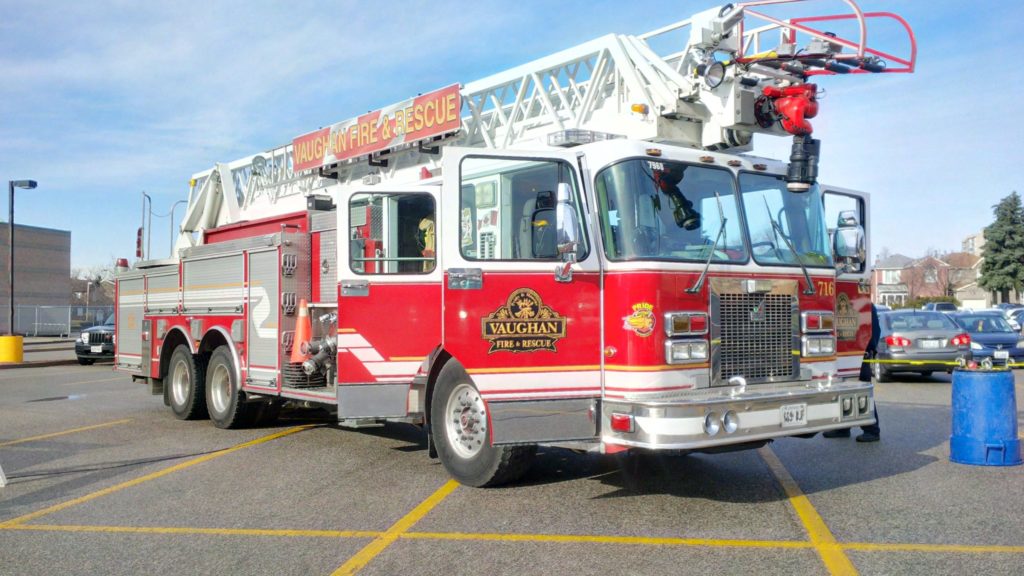New findings from a research project that studied the effect of the COVID-19 pandemic on fire and rescue calls in the city of Vaughan show shifting patterns in the number of emergency incidents.
York University professors Adriano O. Solis and Ali Asgary of the School of Administrative Studies (SAS) in the Faculty of Liberal Arts & Professional Studies, in partnership with the Vaughan Fire and Rescue Service (VFRS) and along with co-researchers Janithra Wimaladasa, Maryam Shafiei Sabet and Michael Ing, have reported the findings in the International Journal of Emergency Services.
The researchers found significant decreases in the number of emergency calls during the COVID-19 pandemic, with vehicle-related incidents showing the biggest declines. Changes in daily and hourly patterns appear consistent with public health measures in place during various stages of the pandemic.
“The pattern shifts are not surprising and reflect a proportionate decline in call volumes and change in call types directly related to mandatory public health measures,” says Andrew Zvanitajs, VFRS fire chief.
Temporal data analytics methods were used to investigate changes in the number and nature of emergency incidents through various stages of the pandemic and associated public health measures. The study leverages the emergency incident and response dataset of VFRS (which includes a record of every emergency incident responded to by VFRS from January 2009 onwards) by comparing incident/response data prior to the pandemic with updates following the various stages of the pandemic.

(image: Wikimedia Commons)
The dataset covers various incident and response attributes, including: alarm time, location, incident/response type (e.g. fires, false fire alarms, vehicle collisions, medical calls of various types etc.) and property type. In 2019, for instance, there were more than 11,300 emergency incidents recorded
"Our research team is currently preparing a report on our ongoing spatial and spatiotemporal analyses of the emergency incidents in the city of Vaughan, involving additional COVID-19 phases beyond the six covered in the first manuscript on our temporal analyses," says Solis. "Our analyses have shown, and will likely continue to indicate, interesting patterns that may offer operational insights for the VFRS management team as phases of the pandemic and associated public health measures unfold.”
The study was conducted in connection with the project "COVID-19: Building disaster preparedness and resilience via analytics of a fire department's responses to emergency incidents in a pandemic – Case of Vaughan, Ontario," which is funded under the Social Sciences and Humanities Research Council of Canada Partnership Engage Grants COVID-19 Special Initiative, with Solis as principal investigator and Asgary as co-investigator. The project actively involves the VFRS as partner organization.
The research work was designed to enable evidence-based planning and decision making with respect to disaster and emergency mitigation, preparedness, and response strategies and initiatives, and to help build longer-term community resilience and disaster/emergency preparedness for the city of Vaughan.
Believed to be the first to analyze emergency incident response data during the COVID-19 pandemic, says Solis, the initial study report concludes that the pandemic has had a significant impact on the demand for emergency services provided by the VFRS. The analysis may be replicated for other municipal fire and rescue services, which could generate further insights applicable to specific local conditions and stages of the pandemic.
When the study was initiated in fall 2020, Wimaladasa was a graduate student in the SAS Master of Disaster and Emergency Management (MDEM) program. She has since completed the MDEM degree, in June 2021. Sabet, who received the MDEM degree in 2019 and is currently an adjunct faculty member at Sir Sandford Fleming College of Applied Arts and Technology, is a research collaborator. Ing is assistant deputy fire chief of VFRS and is an active participant in the York University-VFRS research partnership.
Asgary and Solis were previously engaged in a joint research project with VFRS called "Igniting Insight: Using GIS and Analytics in the Fire Service," which was given the 2019 Innovative Management Bronze Award from the Institute of Public Administration of Canada. In recognition of their participation in that earlier project, they were both named as 2019 York University Research Leaders.
This story was originally posted in yFile.
